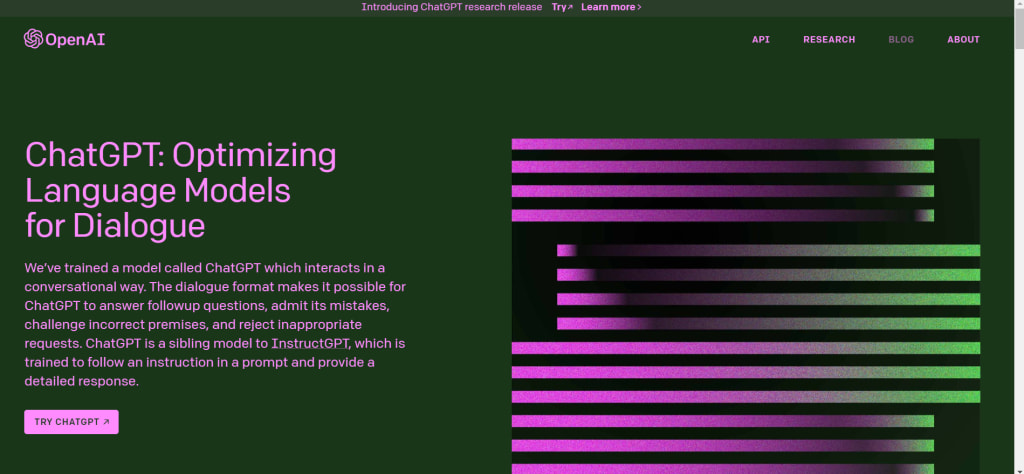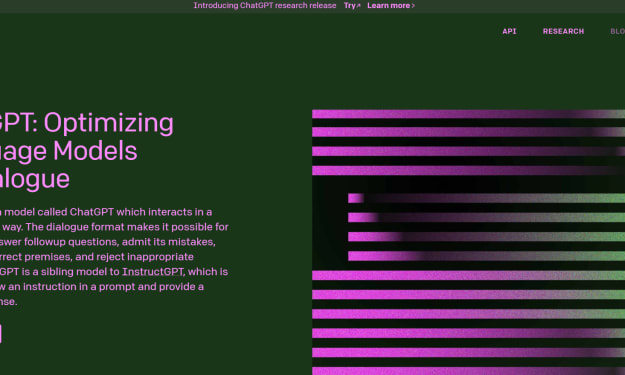Is ChatGPT - a hazard to Student's life?
Effect of chatgpt in 2k kids

ChatGPT is a large language model developed by OpenAI. It is based on the transformer architecture and is trained on a massive dataset of conversational text, which allows it to generate human-like responses to various prompts.
One of the key features of ChatGPT is its ability to continue a conversation based on the context of the previous inputs. This makes it well-suited for use in chatbots and other conversational applications.
In addition to its conversational abilities, ChatGPT can also be fine-tuned for specific tasks such as language translation, question answering, and text summarization.ChatGPT is also highly customizable. It can be fine-tuned on specific task or domain.
Advantages of ChatGPT:
Human-like responses: ChatGPT is trained on a massive dataset of conversational text, which allows it to generate responses that are very similar to those of a human. This makes it well-suited for use in chatbots and other conversational applications.
Contextual understanding: ChatGPT has the ability to continue a conversation based on the context of the previous inputs, which makes it more natural and efficient in conversation.
Customizability: ChatGPT can be fine-tuned for specific tasks such as language translation, question answering, and text summarization, making it more versatile.
Generating a wide variety of text content: ChatGPT can be used to generate a wide variety of text content such as stories, articles, and product descriptions.
Disadvantages of ChatGPT:
Lack of commonsense: ChatGPT is highly dependent on the data it is trained on, and it may not always have commonsense knowledge that a human would have.
Bias in the dataset: ChatGPT is trained on a dataset of conversational text, which may contain biases. This could lead to the model generating biased responses.
Requirement of large computational resources: ChatGPT is a large model and requires significant computational resources to run.
Lack of understanding of the world: ChatGPT is a language model not a knowledge model, it doesn't have the ability to understand the world or make logical inferences.
ChatGPT, like any language model, has the potential to be used in ways that could be harmful or dangerous. However, it is important to note that the model itself is not inherently hazardous. The danger comes from how it is used and the intentions of the user.
One potential hazard of ChatGPT is the spread of misinformation. The model has the ability to generate text that is indistinguishable from that written by a human, making it difficult for people to distinguish between real and fake information. This could lead to the spread of false information, which could have serious consequences.
Another potential hazard is the use of ChatGPT to generate offensive or harmful content. The model has been trained on a large dataset of text from the internet, which means it may have learned biases and stereotypes. It's possible that ChatGPT could generate text that is offensive or harmful to certain groups of people.
It's important to use language models like ChatGPT responsibly and ethically. This means being aware of its limitations and potential hazards, and taking steps to mitigate them. This can include using the model in a controlled environment, monitoring its output, and using filters to remove any offensive or harmful content.
Overall, ChatGPT is a powerful tool that can be used to generate text quickly and easily, but it's important to use it responsibly and ethically. With the right controls in place, the potential hazards of ChatGPT can be minimized, allowing it to be used for a variety of beneficial applications.
Let's saw about the history of chatgpt:
ChatGPT is a large-scale language model developed by OpenAI. It is a variant of the GPT (Generative Pre-trained Transformer) model, which was first introduced in 2018.
The GPT model was trained on a dataset of over 40GB of text data, including articles, books, and websites. It was designed to be able to generate human-like text, making it useful for a variety of natural language processing tasks such as language translation, text summarization, and text completion.
The original GPT model was able to generate text that was often indistinguishable from that written by a human, which made it a powerful tool for tasks such as content creation and text generation. However, it had some limitations, such as its inability to handle tasks that required a deeper understanding of the text, such as question answering.
In 2019, OpenAI introduced GPT-2, an improved version of the model that was trained on a much larger dataset of over 570GB of text data. This made the model even more powerful, and it was able to perform a wider range of tasks with more accuracy.
In 2020, OpenAI introduced ChatGPT, which is an extension of the GPT-2 model. This model has been fine-tuned for conversational text generation, which makes it well-suited for chatbot and conversational AI applications.
ChatGPT has been trained on conversational data and it is able to generate more coherent and fluent responses, which makes it more natural in the conversation. The training data used for ChatGPT also includes more diverse conversational data, which makes it better at handling different types of conversations and different languages.
Overall, the development of ChatGPT is an important step forward in the field of natural language processing, and it demonstrates the power of large-scale language models in generating human-like text. With the ability to handle a wide range of natural language processing tasks, ChatGPT has the potential to be used in a variety of applications, including chatbots, virtual assistants, and content creation.






Comments
There are no comments for this story
Be the first to respond and start the conversation.